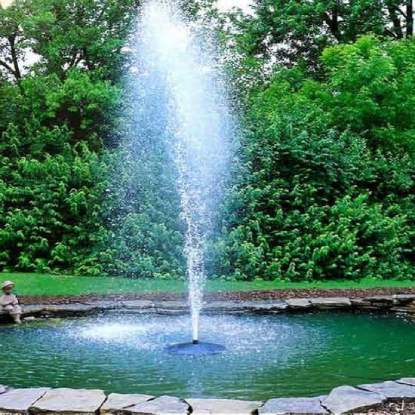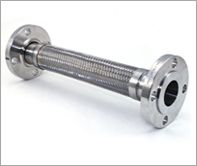Backyard water features don’t require expensive contractors or complex equipment. Most homeowners can create beautiful pond displays with basic tools and weekend effort. The key lies in choosing the right equipment and following proven installation methods.
Many pond owners hesitate to order pond fountains because they assume installation requires specialized skills. This misconception costs homeowners thousands in unnecessary contractor fees. Simple fountain systems work perfectly with standard household tools and clear instructions.
The decision to install fountain pump systems becomes less intimidating when you understand the basic process. Most pumps connect with standard electrical outlets and require minimal plumbing knowledge. Your biggest challenge might be choosing between different fountain styles rather than the installation itself. A floating fountain typically is merely three parts: a float, a pump, and a nozzle. Of course there are often extra features, like those provided by Fountain Tech (a stainless steel or coated seal filter basket, mooring rope, adapter pipes to fit the nozzles, etc.). As you can see, the parts are simple. Anchoring the fountain takes the longest, but it takes absolutely no technical know how.
Essential Tools for Fountain Installation
Basic fountain installation needs surprisingly few tools.
Electrical connections require GFCI outlets for safety compliance. Most modern homes include these near outdoor water sources. Check your electrical panel before starting any project to avoid surprises during installation day.
Measuring tools help determine proper pump placement and fountain height. A simple measuring tape determines the surface size of your pond. To measure depth, you can make a weighted cord and drop it over different parts of your pond so you can calculate average pond depth.
Choosing the Right Fountain Style
Floating fountains work best for deeper ponds with adequate water circulation. These units sit directly on the water surface and require minimal ground preparation. The pump stays submerged while the fountain head creates impressive water displays.
Stationary fountains need solid ground preparation but offer more design flexibility. You can position these anywhere around your pond perimeter. They work well for shallow ponds where floating units might struggle. However, they do not have floats that rise and fall with water levels, and when pond levels get too low, the nozzles submerge under the water.
Tiered fountains create dramatic visual impact but need stronger pumps for proper operation or else tiny holes in nozzles, which create a “sprinkler effect” and can spread water all over outside of pond in windy conditions. Size matters! Largee water droplets provide more aeration and are heavy enough to not blow outside the pond.
Safety Considerations for DIY Installation
Electrical safety takes priority over speed during fountain installation. Turn off power at the circuit breaker before handling any wiring connections. Water and electricity create dangerous combinations that can cause serious injury or death.
Ground fault circuit interrupter protection prevents electrical accidents around water features. Test your GFCI outlets monthly to ensure proper function. Replace faulty outlets immediately rather than risking equipment damage or personal injury.
Proper grounding eliminates static electricity buildup in metal fountain components. Use grounding rods rated for outdoor electrical applications. Skip this step and you risk equipment failure during storms or power surges.
Planning Your Installation Layout
Pond depth affects fountain pump selection and placement options. Shallow areas usually require a Kasco pump, which will operate in shallow waters, as little as 15 inches, depending on the pump. Measure your pond carefully before ordering equipment to avoid compatibility issues.
Wind patterns influence fountain spray direction and water loss. Position fountains away from prevailing winds to minimize evaporation and mess. Your beautiful water display becomes frustrating when constant refilling becomes necessary. Again large water droplets decrease water loss to wind.
Underground utility lines create serious hazards during excavation projects. Call your local utility marking service before digging anywhere near your pond. Hitting buried cables or pipes turns simple projects into expensive disasters.
Step-by-Step Installation Process
Site preparation for a pond begins with clearing debris and leveling the installation area. Remove rocks, roots, and other obstacles that might interfere with equipment placement. A clean work area prevents damage during handling and installation.
Pump placement requires careful consideration of water depth and electrical access. Submersible pumps need adequate water coverage while external units require dry, ventilated locations. External pumps offer easy access to maintenance, but also require more plumbing
Electrical connections follow specific codes for outdoor water feature installations. Use weatherproof connectors rated for continuous outdoor exposure. Cheap connections fail quickly in wet environments and create ongoing maintenance headaches.
Common Installation Mistakes to Avoid
Undersized pumps create weak fountain displays that disappoint homeowners and guests. Calculate your head height requirements before ordering equipment. A pump that works perfectly at ground level might struggle when lifting water several feet. But with pond fountains, it is not only pump horsepower that creates the size of displays, but the kind of nozzle used. Nozzles with small holes in them will create taller and wider displays, but water droplets will be smaller and overall flow, and therefore aeration, will also decline.
Poor electrical planning leads to expensive rewiring projects after installation begins. Plan your power routing before breaking ground or ordering equipment. Running new circuits costs significantly more than most fountain systems themselves.
Inadequate winter preparation damages pumps and fountain components during freezing weather. Remove pumps from frozen ponds or risk cracked housings and damaged impellers. Store equipment indoors during winter months for maximum lifespan. The exception is Scott fountains, which can run outside in icy winter weather.
Maintenance Requirements for Long-Term Success
Regular cleaning prevents algae buildup and maintains optimal water flow through fountain systems. Clean pump occasionally during active seasons and weekly during heavy use periods. Clogged intakes reduce performance and shorten pump life.
Seasonal maintenance includes pump inspection, filter cleaning, and water treatment adjustments. Check electrical connections for corrosion or damage. Replace worn components before they fail and damage other system parts.
Water quality testing ensures healthy pond conditions for both aesthetic and equipment reasons. Poor water chemistry damages pump seals and fountain surfaces. Test pH, alkalinity, and dissolved oxygen levels monthly for best results.
Budget-Friendly Enhancement Options
LED lighting transforms ordinary fountains into spectacular nighttime displays. Solar-powered lights eliminate electrical installation requirements while providing impressive visual impact. Position lights to highlight water spray patterns for maximum effect.
Timer controls automate fountain operation and reduce electricity costs. Run fountains during peak viewing hours rather than continuously. Automatic timers cost less than monthly electricity savings in most installations.
Multiple fountain heads create varied water patterns from single pump systems. Change spray patterns seasonally to maintain visual interest. Simple head swaps take minutes and create completely different fountain appearances.
Transform your boring pond into a backyard showcase with the right fountain system and basic DIY skills. Order pond fountains today and start planning your weekend installation project. Your neighbors will wonder how you created such professional results without hiring expensive contractors.
Featured Image Source: https://www.fountaintechpumps.com/wp-content/uploads/2022/10/ff-6000-floating-pond-fountain.jpg






